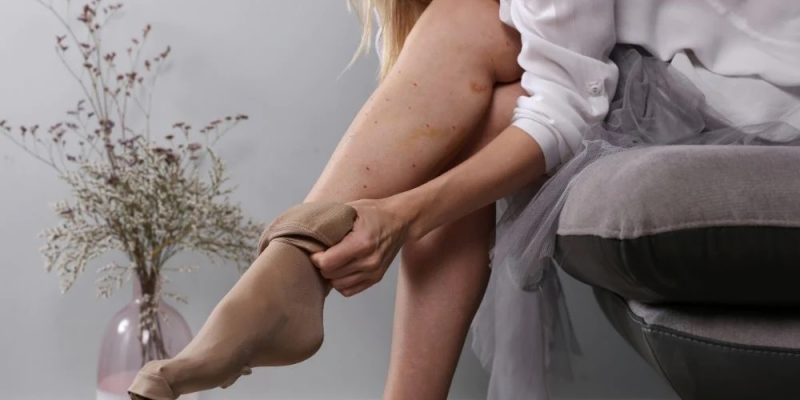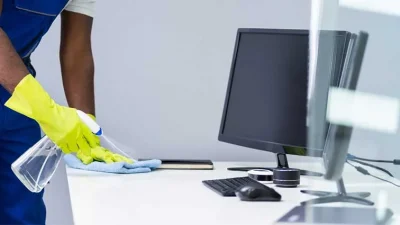You may have known what swelling is, especially if you have not experienced it before. You may have seen swelling or feel one after an injury to parts of the body, maybe from scratching or possibly saw a person with a suddenly fattened leg or arm. Edema is another term used to describe swelling. You will definitely ask a doctor if you are unsure why swelling occurs or the swelling does not subside. Through this article, we will learn about edema and see if it is curable.
Edema is a medical term that is used by healthcare professionals to describe the swelling caused by fluid collected in the space surrounding an organ or body tissue. Edema in general can occur anywhere in the body. Swelling may occur in a particular part of the body or generalised which means all parts of the body. This will depend on the cause. Edema that is commonly seen is in the abdomen (ascites), lower leg or hands (peripheral edema or lymphoedema) and chest (pulmonary edema and pleural effusion).
There are many causes of edema, below are among the common one:
- Long time sitting or standing
- Weakened veins that cause difficulty for the veins to pump black up and back to the heart
- Pressure in the blood vessels resulted from the heart to the lungs
- Inefficient pump by the heart
- Pregnancy that put pressure in the major blood vessel known as vena cava
- Low level of protein in blood caused by liver or kidney disease or malnutrition
- Cancer condition caused by medications and certain type of cancers itself
- Hormone changes in monthly menstrual period
Symptoms of edema will always depend on the cause. Generally, symptoms includes:
- Swelling or puffiness of the skin
- Skin discolouration
- Increased size of the abdomen such as in ascites
- Breathing difficulty such as in pulmonary edema or pleural effusion
- Sudden weight gain
- Sudden unfit or tight clothes and jewellery
- Stiff joints or less flexibility of the joints
- Less urine than usual
Edema may be difficult to be seen with the naked eyes, especially in cases where edema is not significant. To check for edema, you can try pressing the swollen area with your finger with gentle and steady pressure for about 5 to 15 seconds. If edema is present, indentation can be seen when the area has been pressed onto.
To determine the cause for edema, it is best to get checked by a doctor. What the doctor will do is to ask for symptoms first before proceeding with physical examination. Physical examination can help doctors find clues or evidence that can help doctors narrow down all the causes leading to edema. Doctors may ask for further laboratory tests such as urine or blood tests. Urine tests can show evidence for protein that comes from the kidney which causes the edema. Blood tests can show proof of organ function such as kidney or liver problems that may have caused edema. Doctors may also proceed with imaging tests such as x-ray or electrocardiogram to evaluate the heart.
The question of if edema is curable, not really. This is because edema is only treated when the cause is tackled. Most edema is a temporary condition. Not all types of edema require treatment such as in pregnancy or menstrual cycle. Certain cases may be severe and this often needs treatments. Treatment will depend on its causes. Treatment aims to correct the cause behind the fluid build-up. Edema may be treated with medication such as diuretics that often make a person urinate more to eliminate the excess fluid. Patients should avoid drinking too much fluid as this may cause more build-up, unless directed otherwise by doctors. Some people might benefit from physical therapy and occupational therapy.
Apart from medical treatment, patient can do things at home to relieve edema. This includes elevate the legs and avoid lying on the back. Putting pillow under the legs is the simplest way for this. They may also want to try a low-salt diet. In cases of leg edema, using compression stocking can be helpful. Sometimes, surgery is done to the vein to achieve better blood flow. Wearing loose-fitting clothes and shoes can make a person feel comfortable despite having edema. Avoidance of standing or sitting with leg crossed too long can prevent leg edema.
It is important to get treatment for edema as it can be caused by serious underlying condition. When left untreated, it may cause further skin stretched which lead to other problems apart from feeling discomfort. The swollen area should be protected from insults such as extreme temperatures, pressure and injury. Edema need to be protected because when the edema is not intact, it will take longer time to heal and likely to get infected. Thus, it is important to get checked when there is any symptoms relating to edema. Do get in touch with a doctor immediately if there is inflammation sign such as redness, pain or warm temperature of edema. Difficulty breathing and open sore of the edema are also serious signs in need of immediate medical attention.













Comments